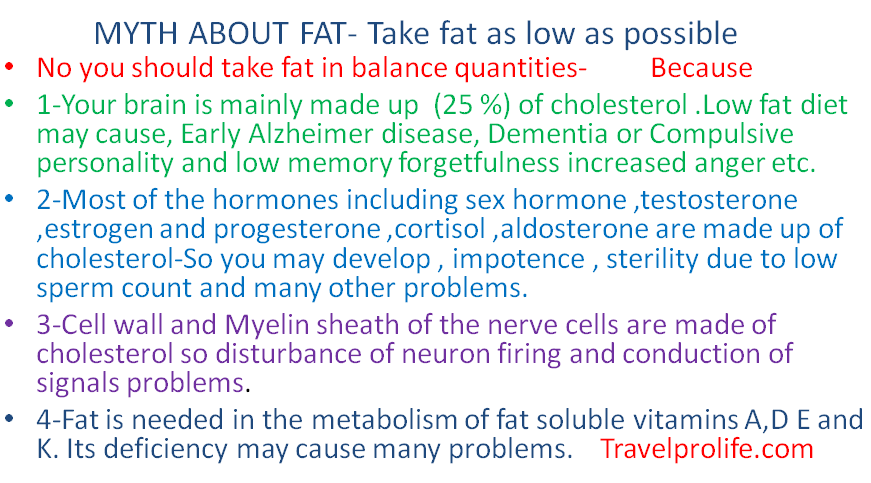Facts and Myths about Fat and Cholesterol and cholesterol are essential components of your body. Its main functions are to produce energy and store it for future use. It protects the brain, maintains the cell wall’s growth, and keeps cholesterol in balance. It is also needed for the absorption of vitamins A, D, and E (fat-soluble vitamins). Cholesterol in the brain is involved in the communication process for neurotransmitters, mainly dopamine and serotonin. The myelin sheath of the neuron is made up of it. This fatty covering provides a protective coating on neurons to increase the brain’s processing speed and conduction.
Fat and cholesterol are different in a way; fats are mainly taken from dietary sources, whereas cholesterol is mainly produced from the liver and intestines.
Fats are divided into good (healthy) fats and bad (disease-causing) fats.
Good Fats: They are called good because they lower the risk of heart disease and stroke. It lowers the bad cholesterol LDL level, which is notorious for depositing in arteries and causing plaque formation. It increases the level of heart-friendly HDL cholesterol. They are monosaturated fats and polyunsaturated fats. Examples are vegetable oils like olive and canola, sunflower, soy, and fish oils. Besides pumpkin, sesame oils also fall into this category. The chart below depicts the good, bad, or very bad fats.

CHOLESTROL FACTS –

Cholesterol is needed to make vitamin D and the hormones testosterone and estrogen. The liver and intestines make up about 80% of the cholesterol that makes you healthy. Too low levels of good cholesterol might lead to heart disease and stroke. Both the LDL and HDL kinds are needed to balance their levels. CHOLESTEROL LEVELS IN THE BODY Total Cholesterol level should be under 200; between 200 and 239 is borderline high, whereas over 240 is high.HDL (good) cholesterol is desirable at 50 or above. Under 40, it is low for men, and under 50, it is low for women.LDL (bad type) should be below 130; 130–159 is borderline high, whereas above 160 is high, and above 190 is very high. Triglycerides should be below 160 as normal and 160–199 as marginally high. 200–400 is high, and above 600 is considered very high and risky.
Fat and Cholesterol

Satish Tripathi sctri48




At last someone wrote something very important about such hot topic and it is very relevant nowadays.
דירות דיסקרטיות בחולון